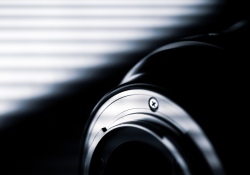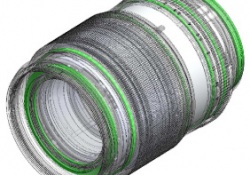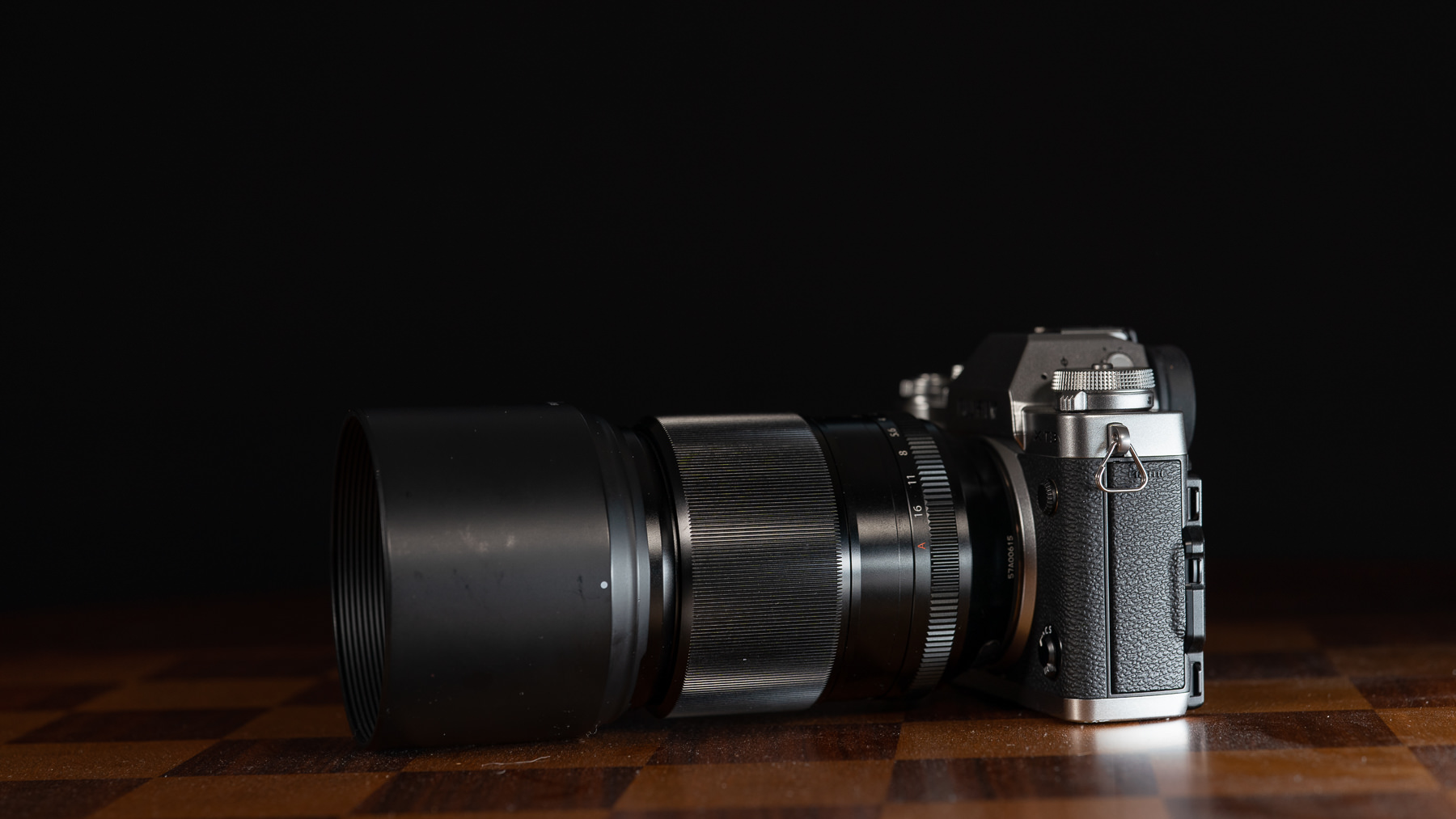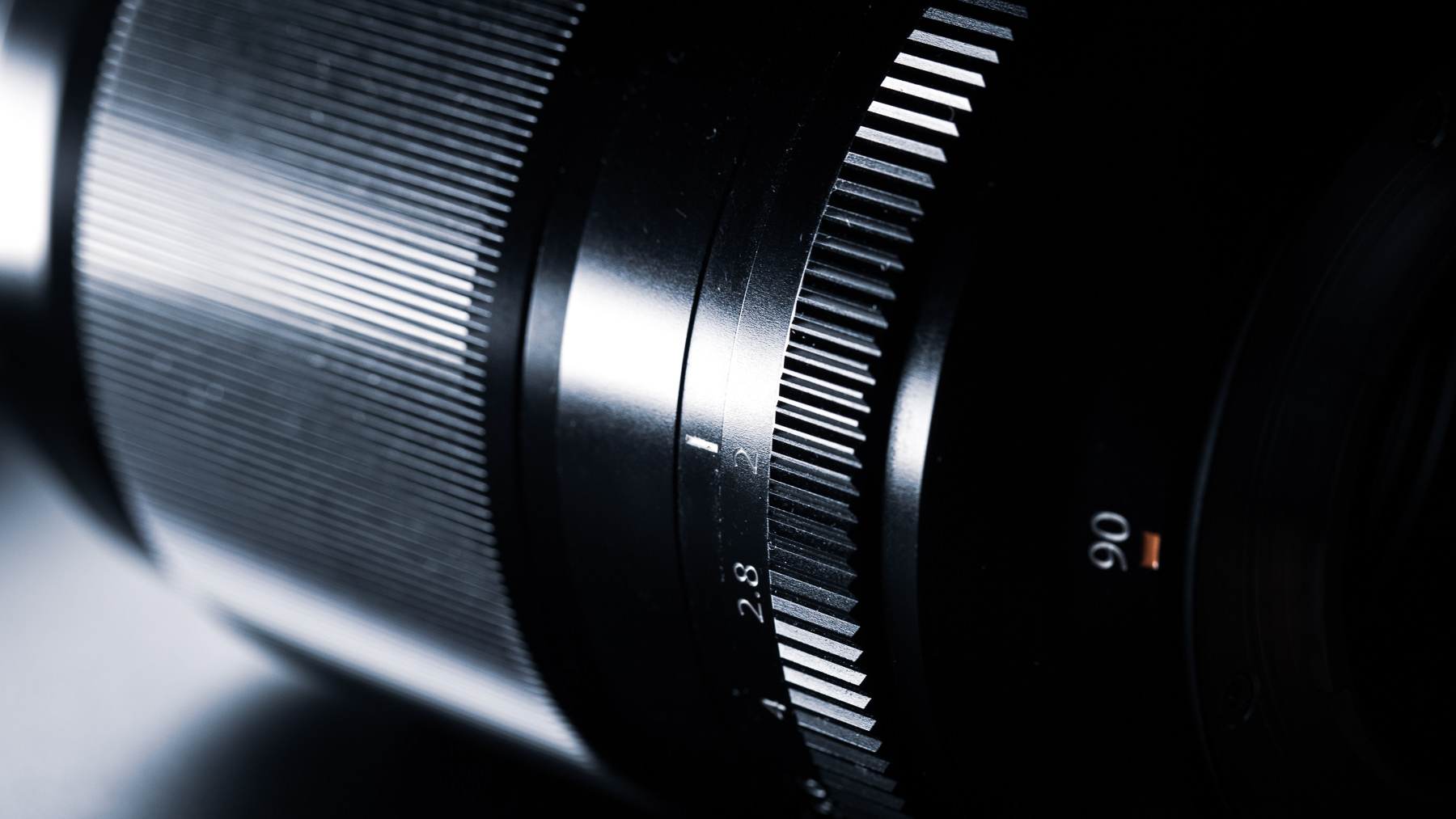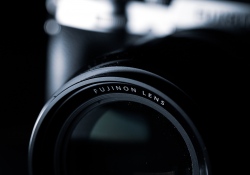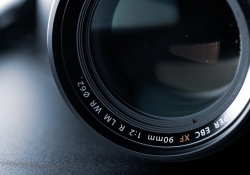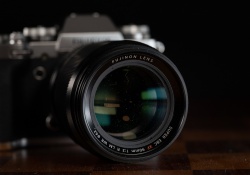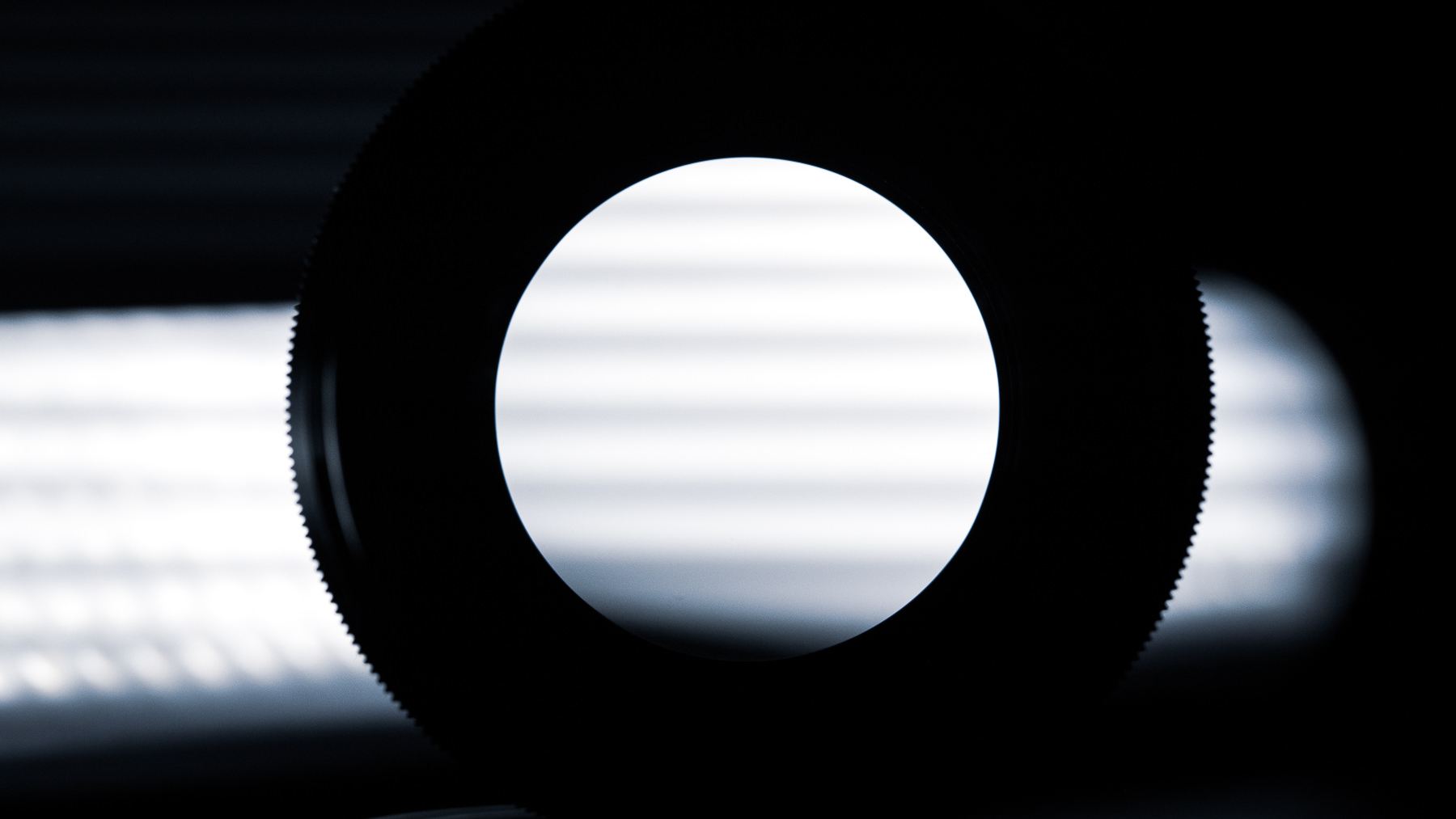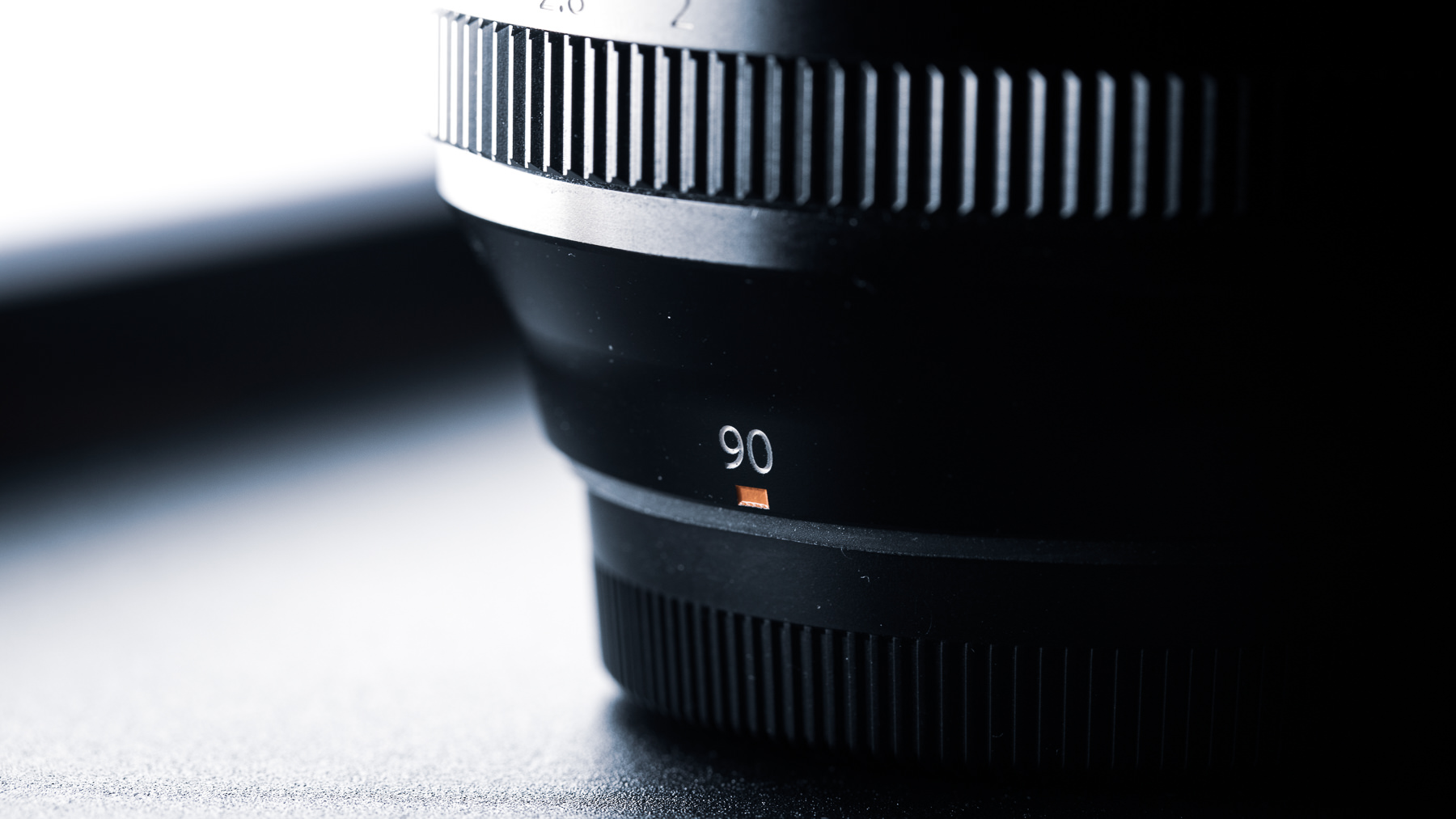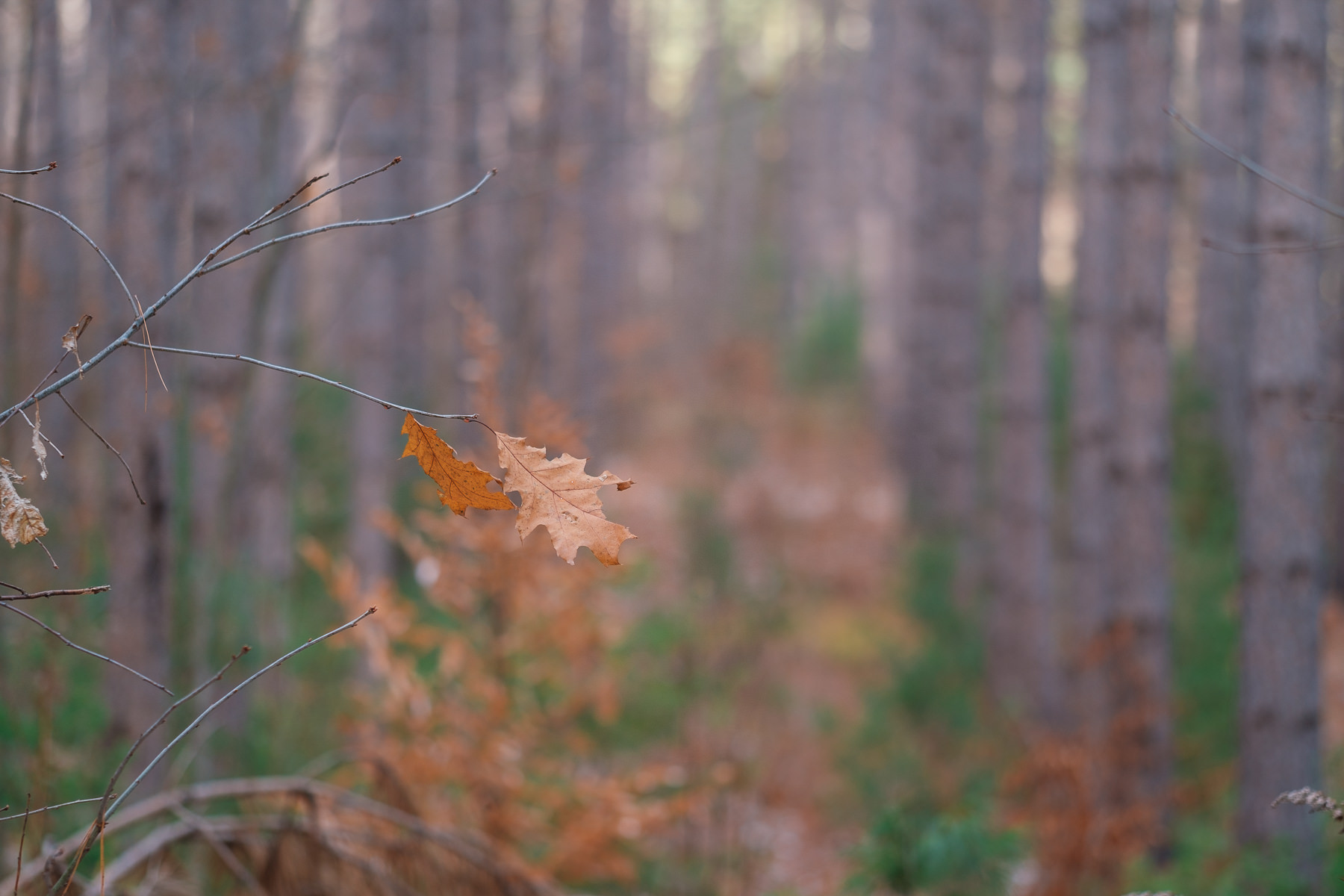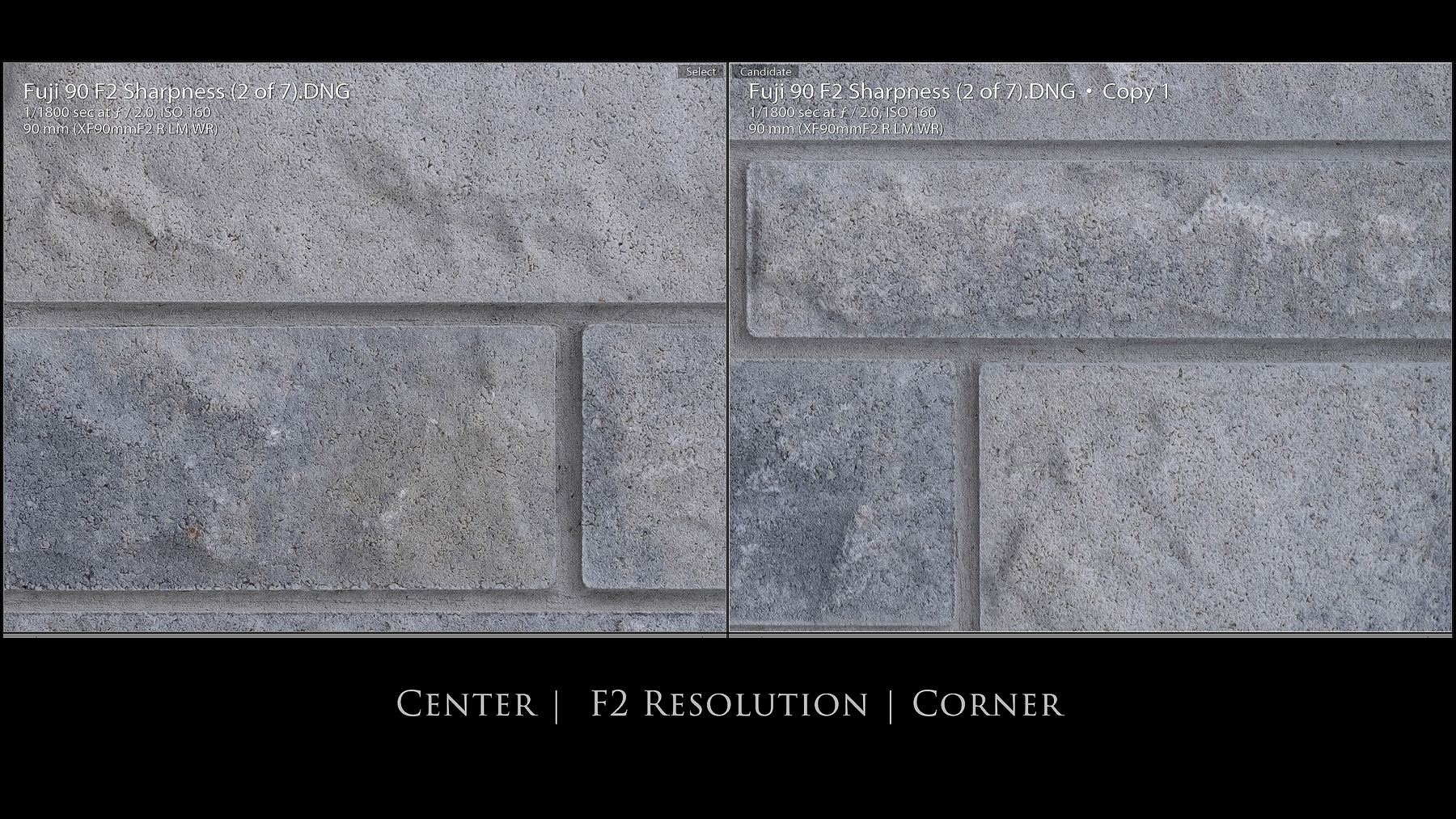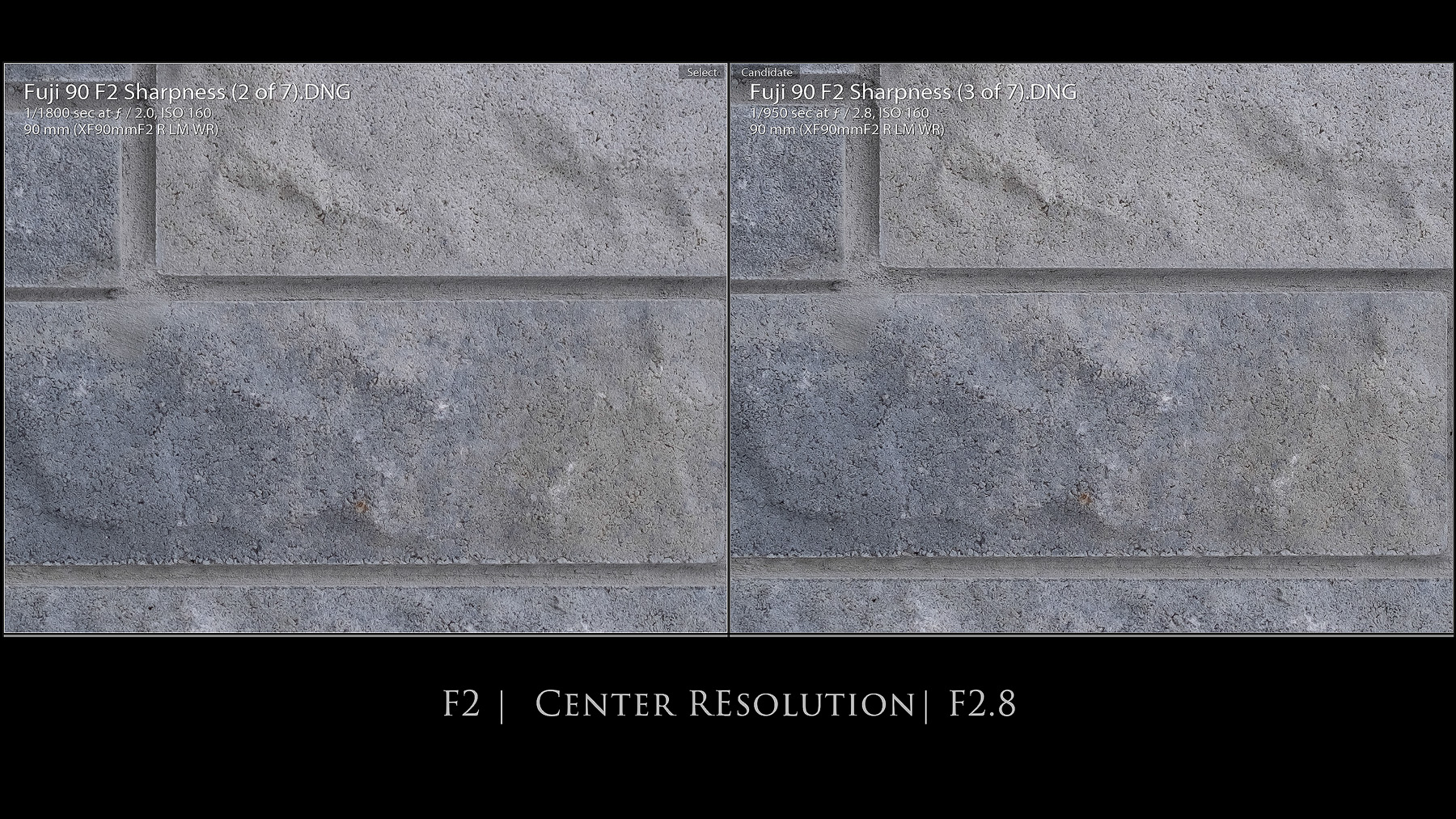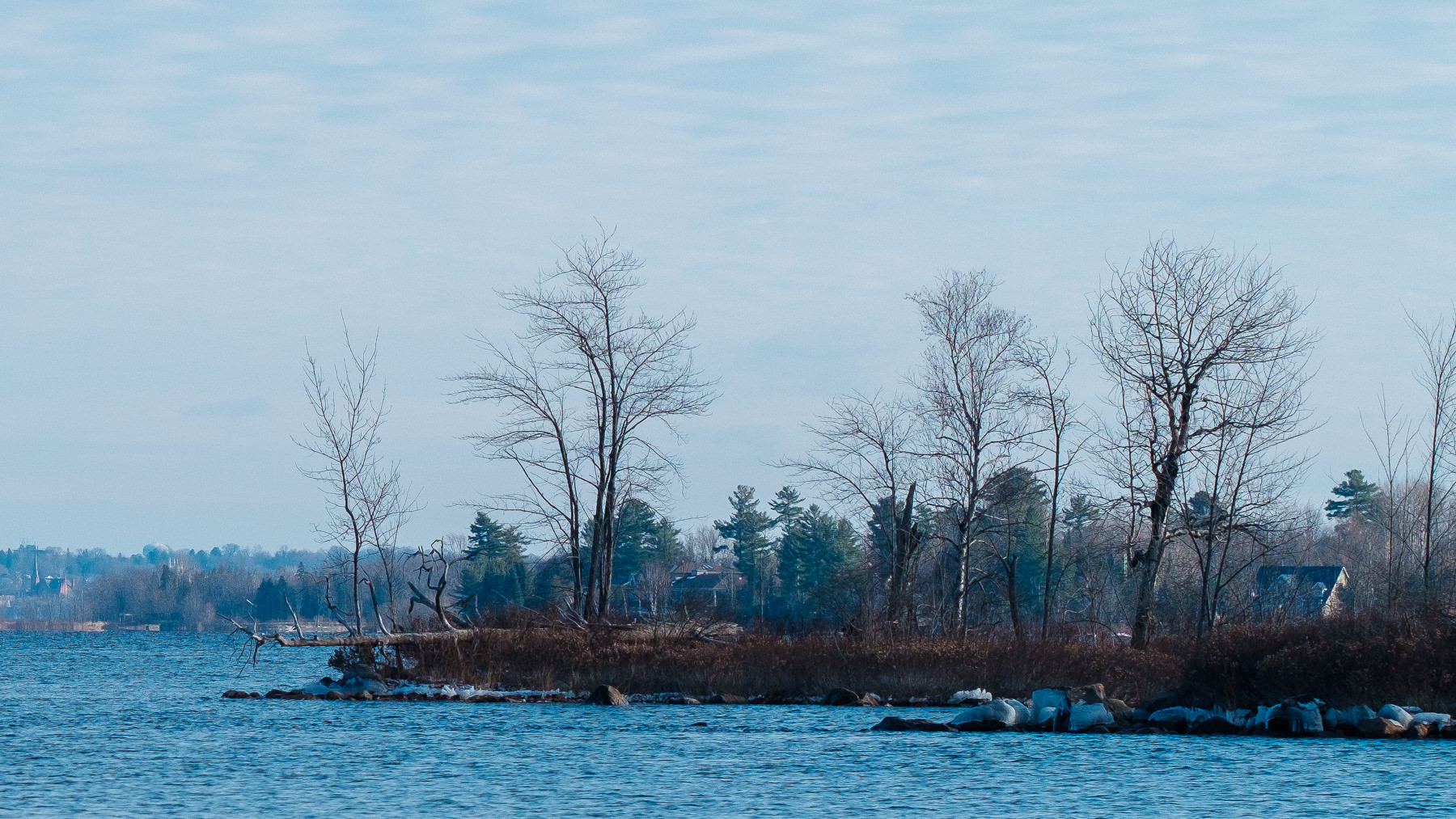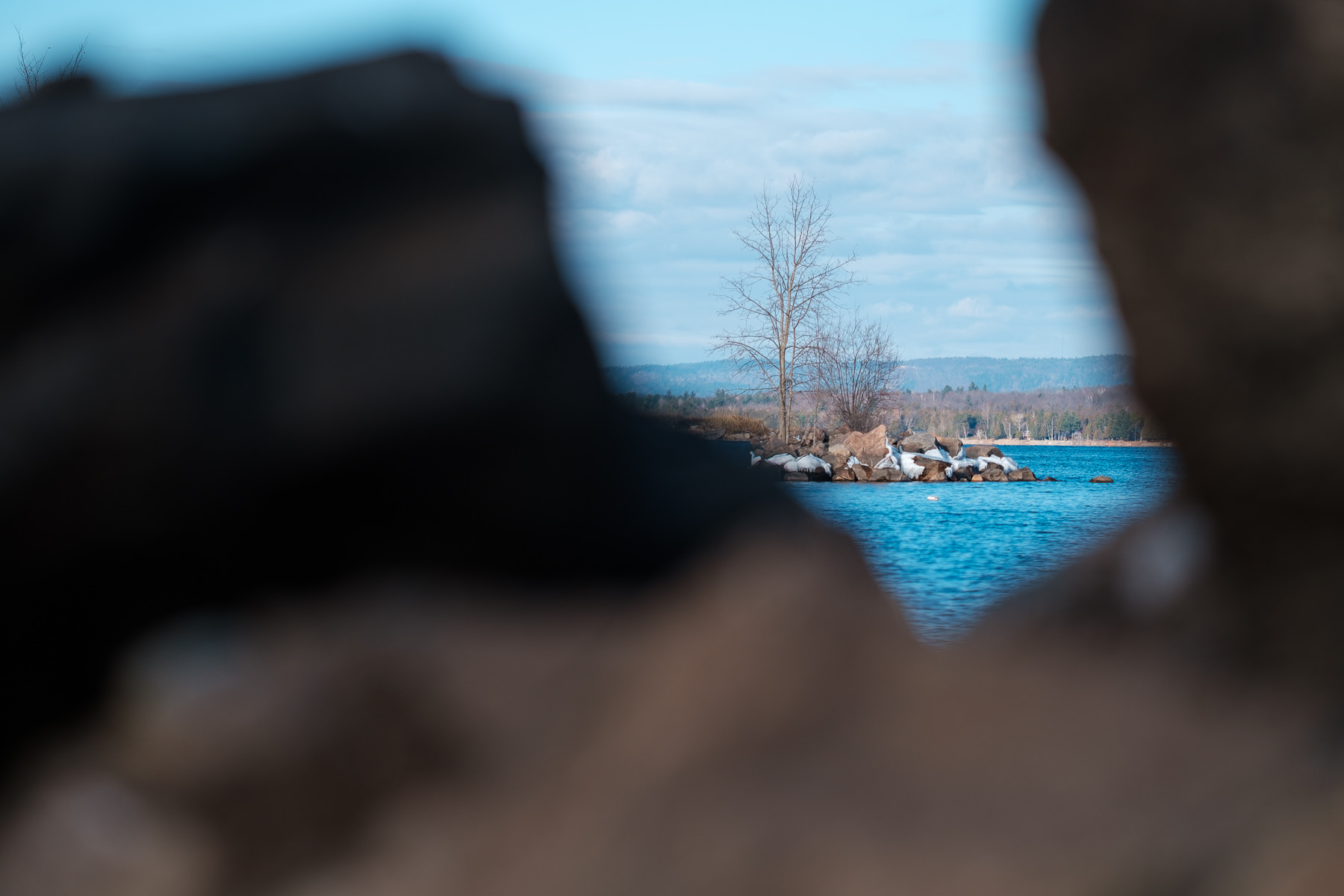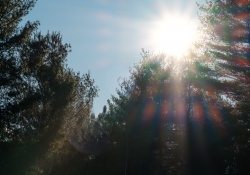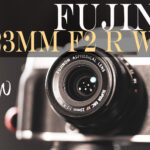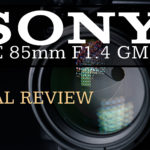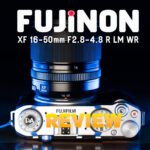The Fujifilm platform has been the best place to be to get excellent APS-C lenses of all shapes and sizes. Fuji’s strategy has been to forego the popular 35mm (full frame) sensor and putting all their eggs into the APS-C basket. They’ve also moved into the Medium Format space with their GFx system, but that is a more niche, specialized space that the average photographer is essentially oblivious to. The APS-C shooters in the Canon, Nikon, and Sony space have typically had to make due with mostly lower tier lenses for APS-C, as the vast majority of the development from these companies is for full frame. Fujifilm shooters, however, have been treated to a fairly significant array of options (both commercial grade and premium) in and around most popular focal lengths and zoom ranges. Case in point is the lens that we are reviewing today, the Fujinon XF 90mm F2 R LM WR (hereafter called the XF90 for brevity), which is a premium grade 135mm equivalent telephoto lens at a very popular portrait focal length. I recently reviewed the Fujinon XF 56mm F1.2 R lens, which serves a role much like an 85mm lens on a full frame (35mm) system. The Fuji X-mount cameras have a crop factor of 1.5x, though this is not an entirely accurate figure, as Fuji actually cites the full frame equivalency of the XF90 as 137mm rather than 135mm (more like 1.52x). I’ve seen this before when examining their tech specs, so I think this is a general observation about the X system’s crop factor. For all practical purposes, however, we have a 135mm(ish) portrait and telephoto lens…though with a considerably smaller form factor than an equivalent lens for full frame.
I’ve done this review on a Fujfilm X-T3 camera body, which means that there is no in body image stabilization. The XF90 does not have OS, unfortunately, so this is going to be a non-stabilized option unless you are using an X-H1 camera (or successive bodies after this review than contain IBIS). That is a significant drawback, unfortunately, as 135mm is a long enough focal length to encounter more obvious motion blur. This combines with the reality that 26Mp is very pixel-dense for an APS-C sensor, so motion blur becomes a little more obvious here as well. I mention this because I was occasionally surprised by minor motion blur in some of my images in unexpected situations (like shooting at shutter speeds of 1/200th). This is a focal length, frankly, that would have benefited from some kind of stabilization. This isn’t a problem unique to Fuji, per se, but it is part of the reason why I continue to believe that Fujifilm should expand their inclusion of IBIS to more models…including the X-T series.
You can see evidence of some motion blur here in this 1/200th shot…and I have steady hands!
While I’ve lamented what wasn’t in the XF90, fortunately there are a lot of things that are there, including LM (linear motors to drive autofocus, in this case 4!! of them) and WR (weather resistance, in the form of a gasket at the lens mount along with six other internal seals).
This is a premium lens, and both of these were features missing on the XF 56mm F1.2 that I recently reviewed. But is the XF90 the lens for you? Let’s explore that idea together…
Prefer to watch your reviews? Here’s my two part video review series (Part 1 covers build, handling, and image quality. Part 2 covers portraits, autofocus performance, video performance, and my conclusions):
Follow Me @ Patreon | My Newsletter | Instagram | Facebook | Twitter | Flickr | 500px
Fuji XF90 Build, Handling, and Design
The XF90 is a very nicely made lens. It features a great form factor. We see the advantage of developing for the smaller sensor in a smaller lens when compared to full frame 135mm lenses. The lens is only 2.95 x 4.13″ | 75 x 105 mm (D x L) and weighs a moderate 1.2 lb (540g). That’s roughly 7mm less in diameter and length and 210g less in weight than the Canon EF 135mm F2L lens. The front filter thread is a slightly uncommon 62mm; not every filter maker produces filters in this size, but there are plenty of options out there. The lens balances well on the X-T3 body I used for review.
The body is primarily made of metal and has a premium feel to it. I did notice a very slight wobble in the lens mount connection to the camera. The lens has a classic semi-glass black finish to it and is completed with thorough weather sealing (as already noted).
There are two rings. The closest to the mount is the aperture ring. You have the option to select A and control the aperture from the camera or to physically select your preferred aperture in one-third stop detents. There is no clickless option for the aperture.
It should be noted that the aperture ring is a “by-wire” system. Using the aperture ring without the lens attached to the camera and the camera powered on will accomplish nothing. I do prefer having an aperture ring on a lens as I find that it makes the photographer more intentional about aperture selection. If you don’t want to mess with it, just put it in A mode and forget about it.
The wide focus ring has nice metal ridges and moves nicely. It to is a “by-wire” ring, and input on the focus ring will be routed through the focus motor to move the elements. The damping is about right, and the ring moves smoothly and precisely. Fuji gives the option of choosing between linear and non-linear focus action, though neither quite imitates true manual focus. Non-linear will allow you to make faster focus changes if you twist the focus ring quickly, but this option lacks repeatability. You’re never quite sure exactly where you’ll end up. Selecting linear allows for more repeatability/predictability, but making major focus changes requires repeated full rotations of the ring and as a result it is difficult to make smooth focus pulls when shooting video. Bottom line is that if you want excellent manual focus, buy a manual focus lens.
The XF90 has a great looking front facade with lens information on the front. Fuji makes attractive lenses with a wonderfully classic aesthetic.
If you look through the lens, you will see a lot of glass. An aperture of F2 at this focal length is nice and big!
I’m far less enthused about the lens hood. It is a fairly cheap feeling plastic with interior ribs to help block stray light from bouncing around. It has a matte plastic finish that shows marks fairly easily and does not click definitely into place. It’s very easy to rotate loose. The lens hood feels like a cheap misfit on such an otherwise nicely built lens.
Other than this misstep I’m very happy with the build quality and handling of the lens.
Fujinon XF90 Autofocus Performance
This section is a little complicated for me, as Fujifilm is one of three mirrorless systems that I spend a lot of time with, and as a result part of my opinions are formed by what I perceive as Fujifilm vulnerabilities when it comes to focus. It’s hard to divorce lens performance from camera performance when it comes to autofocus. Let’s start with what is clearly positive and lens specific. The XF90 has a very powerful quad linear motor focus system. This gives it a clear advantage over a lens like the 56mm F1.2 in both focus speed and quality of focus.
Focus is fast and quiet, though there can sometimes be a micro-pulse or two before focus settles. This shows up when shooting video, too, as while focus pulls are fairly quick and smooth (better than most of what I’ve seen on Fuji), there is some minor pulsing before focus settles. What I do see is less obvious stepping than what I see from many Fuji lenses, so there is definitely some evidence that those quad focus motors are doing their job.
The focus speed also helps this to be a better lens for stopping action than some of their other medium telephoto options.
There are few places where the lens/system fall short, though. The first is that while the lens has a great minimum focus distance (1.97’/60cm) and great maximum magnification figure (0.30x in real-world terms), the lens is very reluctant to focus on a foreground object if focus is not already close. You can set a focus point right on an obvious foreground object, and still the lens will refuse to focus on the foreground object. I had a number of situations in my review period where I had restart the focus process multiple times or try to focus on another midpoint object to start moving focus towards the foreground. On a few occasions it required switching to manual focus and manually pulling focus in the right direction (like the shot below). Very annoying.
The reason that I don’t blame this entirely on the lens is that I’ve seen a press release regarding a future firmware update for the X-T3 (V3.20, scheduled for January 2020) that included this nugget that caught my eye, “Improving autofocus capability on a foreground subject even when there is a mixture of foreground and background subjects within a frame, causing the foreground subject to go out of focus, e.g. when shooting flowers against a busy background.” That sounds very much like what I’ve seen throughout this review, so it seems like this could be more of a camera focus problem than a lens-specific problem.
This is probably also true of the second issue (which, ironically, may also be addressed in that same firmware update according the press release). I find the Eye AF (Pupil Detection) to be somewhat less accurate than either Sony’s excellent Eye AF or Canon’s dramatically improved Eye AF (after firmware) on the EOS R. A lens like the XF90 sports a very shallow depth of field (DOF), and I often found that the eyelashes rather than the eye itself would be in focus.
In the shot below, the lens did not properly focus on the visible eyes because of the coffee mug held in the subject’s hands. I had to override focus to get what I wanted:
In many situations the lens focused just fine though, and, with a little effort, I was able to get what I wanted in most all situations.
Bottom line is that while it feels like there is an effective focus system in the XF90, it is held back somewhat by some areas that Fuji still lags a bit behind some of its competition.
Fuji XF90 Image Quality Breakdown
There is one thing that Fuji does particularly well, and that is that they really do develop exceptionally good profiles for their lenses. Even RAW files arrive with embedded correction profiles, so you will only ever see an uncorrected image if you turned off the corrections in camera. The byproduct of this is that my brick wall tests are among the cleanest that I ever see, with no vignette or distortion to be seen. I’ll spare you even looking at them (you can determine the lack of vignette from the sharpness samples below). It’s not unusual for 135mm lenses to have little to no distortion, but vignette is another matter. The reason I praise Fuji’s corrections as being exceptional is because they produce extremely even results with vignette correction unlike some profiles where the corners are overboosted compared to the remainder of the frame.
The XF90 produces excellent center results and nearly as good corners even at F2:
Real world results look great, too. Check out the detail in the fibers of the rope at F2:
You can see excellent real-world contrast in this image:
The reason for this can be seen in another image, which shows that longitudinal chromatic aberrations are really well controlled. The high contrast transition edges on this statue show no real signs of any fringing:
Stopping the lens down to F2.8 shows an obvious uptick in contrast, with darker areas looking darker and lighter areas looking lighter and crisper:
This trend continues on to F4, where resolution and contrast reach exceptional levels across the frame:
The detail in the somewhat distant peninsula is exceptional and a tribute to the flexibility of a lens like this for shooting a variety of subjects.
Resolution and contrast peak at F5.6, with a fractional regression at F8 and a more noticeable one by F16 due to diffraction.
As alluded to previously, the lens has an excellent reproduction ratio, though Fuji kind of obfuscates this by citing two different magnification figures. They cite the APS-C reproduction ratio as 0.20x, and the full frame equivalent of 0.30x. I find this a little silly, as you will only ever see ONE reproduction ratio, and it is the higher figure. Look at how much greater the magnification of the Fuji is than that of the Zeiss Milvus 135mm F2 and its 0.25x magnification.
The close-up performance of the Fuji isn’t as good as the Zeiss…but few lenses are, so I won’t hold that against it. I love having a great magnification on a lens like this; it adds so much versatility to what you can do.
Probably the most practical aspect of this is that you can mostly frame as tight as you like and be creative with your composition.
The bokeh of the XF90 is very nice, though I wouldn’t characterize it as “magical” in the way that some exceptional telephoto portrait lenses can be (the Milvus, for example). The aperture iris has seven rounded blades, though you will start to see their shape with the lens stopped down a bit. The first shot below is wide open; the second is F4, and you can definitely see a few points on the edges of the circles.
The quality of the background blur at many focus distances is very nice:
…though there are few situations where it can look a little busy:
Bokeh is a fairly subjective topic, so I’ll just show you some images at varying focus distances and let you be the judge yourself:
I would say that in general I think the lens does a good job.
I generally find the colors from the lens quite pleasing.
Skintones are very nice as well:
The primary vulnerability for the XF90 (like many wide aperture primes) is some susceptibility to flare. You will have to be careful with either the sun in the frame or a strongly backlit subject with direct lights. The first two images show both artificial light (flashlight) and the sun in the frame at F2; the third image shows the resulting pattern at F11:
There’s definitely some veiling (loss of contrast) at F2 along with some generally undefined ghosting blobs. There is a more defined ghosting pattern at F11, though some might find that artistic. You’ll just either have to be careful or creative in the way that you use flare…as there will definitely be some.
In general I’m pleased with the optical performance of the lens. It’s capable of fantastic results, though I wish Eye AF was a little more accurate so that it could show this lens to its best potential. You can definitely take some magical shots with it.
Conclusion
My general impressions of the Fujinon XF 90mm F2 R LM WR are more positive than those of the 56mm F1.2 because the latter lacks an effective autofocus system or weathersealing (no LM or WR) and yet is the more expensive lens of the two. It delivers a stronger wide open performance as well and was more pleasing to use because of the more modern, sophisticated quality of focus due to the quad linear motors. Both lenses are effective portrait lenses when used to their strengths.
But an 85mm equivalent lens (56mm) and 135mm (90mm) lens are different in kind. While I generally prefer the unique look that 135mm lenses produce (they can create a wonderful “cutout” effect for full frame portraits), they are also less flexible.
In many situations a 135mm lens (or 90mm on APS-C) is generally too long. In a wedding situation, for example, I have found that there were times that I couldn’t step back enough, and my framing felt crowded. So while the Fujinon 90mm is capable of producing more special images (and is nicer to use), the 56mm is the more flexible tool. Which lens is better for you might depend on what else you have in your bag.
This is a nice lens, however, capable of producing beautiful images that you can be proud of, and there is every reason to believe that it will perform even better as Fujifilm continues to tweak their focus systems in their cameras (and hopefully adds IBIS to more bodies!) I noted that on B&H Photo’s website there is an aggregate 5 star rating with 100 reviews…so people are definitely fans of this lens. This is a very useful tool and may just become the favorite portrait lens in your bag…just make sure you have enough room to use it!
Pros:
- Very nice construction complete with thorough weather sealing
- Quad linear motors provide quick, quiet focus
- Nice sharpness and contrast wide open
- Exceptional sharpness when stopped down
- Good color
- Exceptional chromatic aberration control
- Nice bokeh
Cons:
- Lens hood is cheap
- Sometimes won’t focus on foreground subjects
- Somewhat flare prone
Purchase the Fujinon XF 90mm F2 @ B&H Photo | Amazon | Amazon Canada | Amazon UK | Amazon Germany | Ebay
Purchase the FUJIFilm X-T3 @ B&H Photo | Amazon | Amazon Canada | Amazon UK | Amazon Germany | Ebay
Peak Design Slide Lite: Peak Design Store | B&H Photo | Amazon | Amazon Canada | Amazon UK
Peak Design Leash Strap: Peak Design Store | B&H Photo | Amazon | Amazon Canada | Amazon UK
BenQ SW271 4K Photo Editing Monitor – B&H Photo | Amazon | Amazon.ca | Amazon UK
Adobe Photoshop Creative Cloud 1-Year Subscription
Alien Skin Exposure X4 (Use Code “dustinabbott” to get 10% anything and everything)
Visit Dustin’s Amazon Storefront and see his favorite gear

Purchasing your gear through B&H and these links helps fund this website and keeps the articles coming. You can also make a donation here if you would like. Visit my Amazon page for some of my gear of choice! Thank you for your support.
Great News! I can now offer a 5% discount on all purchases at Amplis Foto, Canada’s Leading Photographic Supplier. Please enter discount code: AMPLIS52018DA in your cart. It is good for everything in your cart, and is stackable with other coupons, too! It will take 5% off your entire order! Proceeds go towards keeping this site going and providing you with new reviews!
Check me out on: My Patreon | Sign Up for My Newsletter | Instagram | Facebook | Twitter | Flickr | 500px | Google+ |
Use Code “DUSTINHDR” to get $10 off ($15 CDN) any Skylum product: Luminar, Aurora, or AirMagic
Keywords: Fujinon, Fuji, 90mm, Fuji 90 Review, Fujinon 90mm, 90mm 2, 90 F2, 90mm F2, Fuji 90mm F2 R Review, Fujifilm X-T3, 90mm, F2, 2, FE, XF, Dustin Abbott, Review, Autofocus, Hands On, Video Test, Portrait, Video, Bokeh, Real World, Comparison, VS




